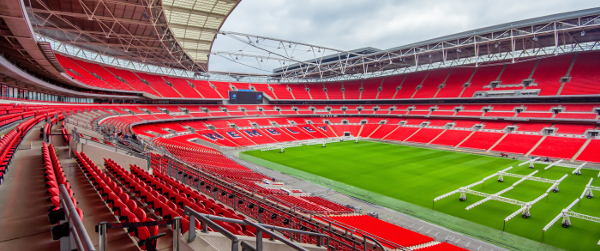
EE, Huawei and Qualcomm this week launched 4G network trials at Wembley Stadium, achieving download speeds of over 400Mbps.
The high download speeds were achieved by aggregating three different EE spectrum bands to achieve 400Mbps speeds to a single device, using Qualcomm’s Snapdragon 810 processor.
A bespoke audio-visual installation at the stadium was used to demonstrate the technology, featuring 4K and HD screens and audio streaming.
"This demonstration at Wembley Stadium is an opportunity to show the world the future of the EE mobile network, and what 3-carrier aggregation can do," said Tom Bennett, director of network services and devices at EE.
He added: "We’re showcasing incredibly high speeds here, but what we’re also showcasing is amazing capacity – the ability to provide a great internet connection to so many people all at the same time is vital."
Mohamed Madkour, Vice President Marketing, Huawei Wireless Network Product Line, commented: "We are thrilled to see the innovative technology of LTE-Advanced coming to reality in a place like Wembley Stadium where a speed-hungry application like 4K video streaming is much needed by many simultaneous users.
"Huawei’s collaboration with EE and Qualcomm Technologies has allowed all three companies to showcase what is made possible through LTE-Advanced."
The demonstration comes ahead of the launch of 4G+ at Wembley, set to be switched on in March 2015. This is intended to double mobile data capacity for fans in the stadium, as part of EE’s aim to make Wembley the world’s most connected stadium.
However, some question the ability of 4G to deliver connectivity on the scale and density needed for a large stadium. Simon Hills, Commercial Director of Sports Revolution, which specialises in stadium wi-fi deployments, commented:
"Stadium connectivity is a hot topic in sport this year, especially in football, where fans have always been frustrated by the lack of signal we all experience when in a packed ground. You just have to look to the US, where the technology is more mature, to see the wide range of commercial uses evolving, including seat upgrades, food and drink ordering to your seat and merchandise transactions."
"Wembley has gone for a 4G option, but we believe stadium connectivity is best delivered through true high-density wi-fi," Hills adds. "That is the only way to ensure sufficient bandwidth and a satisfying experience for a huge crowd using it at the same time."
Image: Andrew Barker






